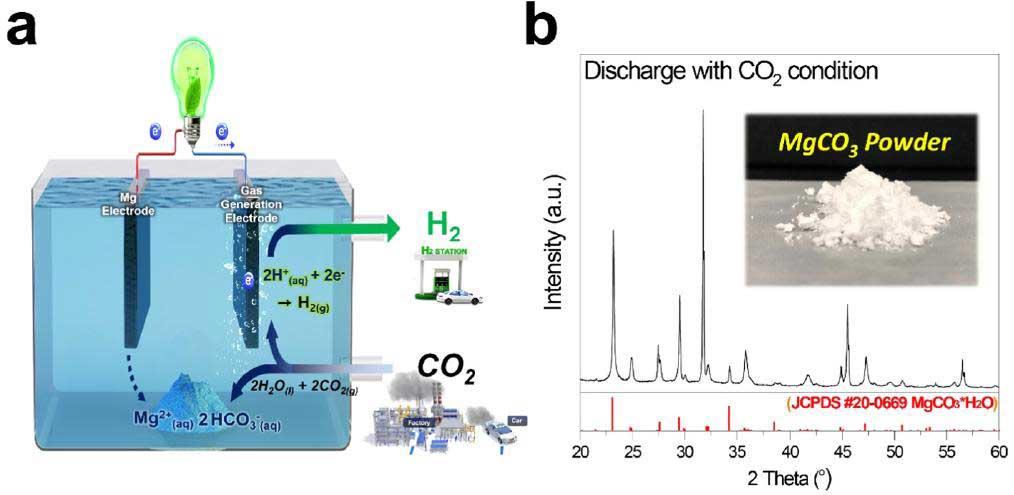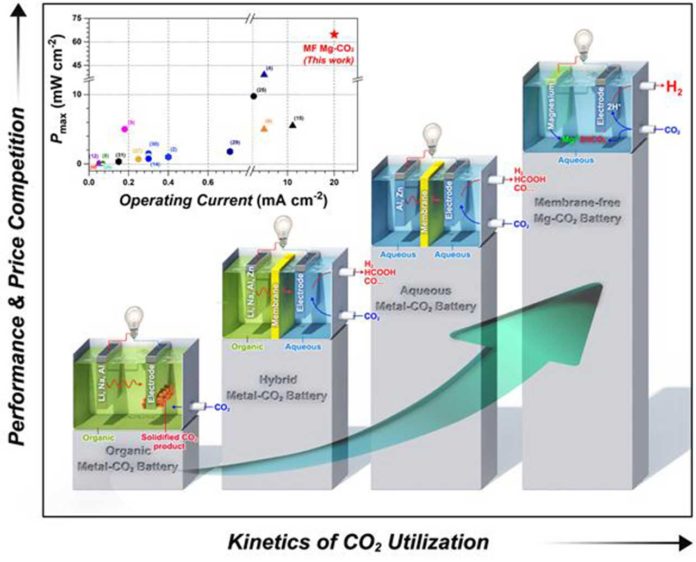Economical and efficient carbon capture, utilization, and sequestration technologies are essential for addressing the global challenge to reduce CO2 emissions. However, current CO2 conversion technologies cannot meet the financial and energy requirements due to the slow processes for CO2 sequestration.
Now, scientists from UNIST have developed a novel system that can effectively produce hydrogen and electricity quickly and effectively while eliminating carbon dioxide (CO₂) emissions significantly.
Scientists have developed a membrane-free aqueous metal–CO₂ battery as an advanced approach to sequester CO2 emissions by generating electricity and value-added chemicals without any harmful by-products. The battery allows continuous operation with one type of electrolyte based on the indirect utilization of CO2 with a facile hydrogen generation process. It has also been found that the new battery exhibits high faradaic efficiency of 92.0%.
To translate this battery technology into commercial reality, scientists envisioned an operational prototype system that produces electricity and value-added chemicals as a cornerstone to support sustainable human life from CO2 and earth-abundant renewable power (e.g., wind, solar, seawater).
The battery has a structure similar to that of hydrogen fuel cells for use in cars. It requires an Mg-metal negative electrode, an aqueous electrolyte, and a positive-electrode catalyst.

Unlike other aqueous electrolytes-based fuel cells, the battery had successfully sequestered CO2 emissions by generating electricity and value-added chemicals without any harmful by-products.
Scientists noted, “Our findings indicate great benefits for the newly-developed MF Mg-CO2 battery technology to produce various value-added chemicals of practical significance and electricity from CO2 without any wasted by-products. Through this, we have opened the door to electrochemical utilization of CO2 with indirect circulation for future alternative technologies.”
Journal Reference:
- Jeongwon Kim, Arim Seong, Yejin Yang, et al., “Indirect surpassing CO2 utilization in membrane-free CO2 battery,” Nano Energy, (2021). DOI: 10.1016/j.nanoen.2020.105741
